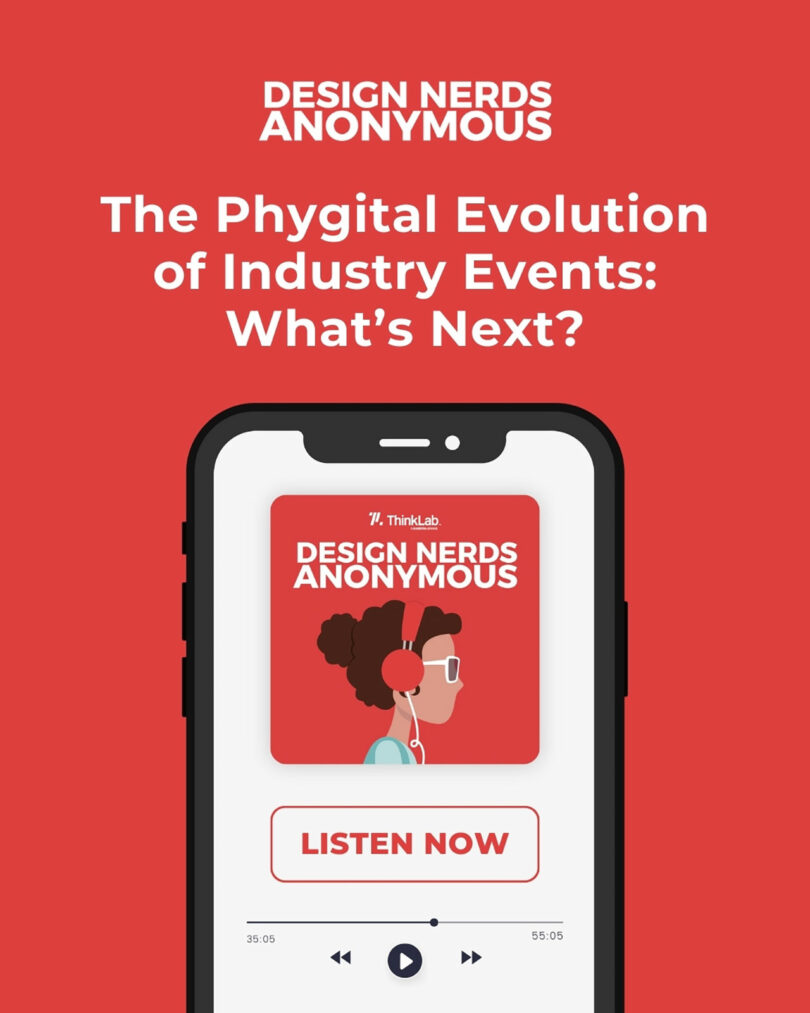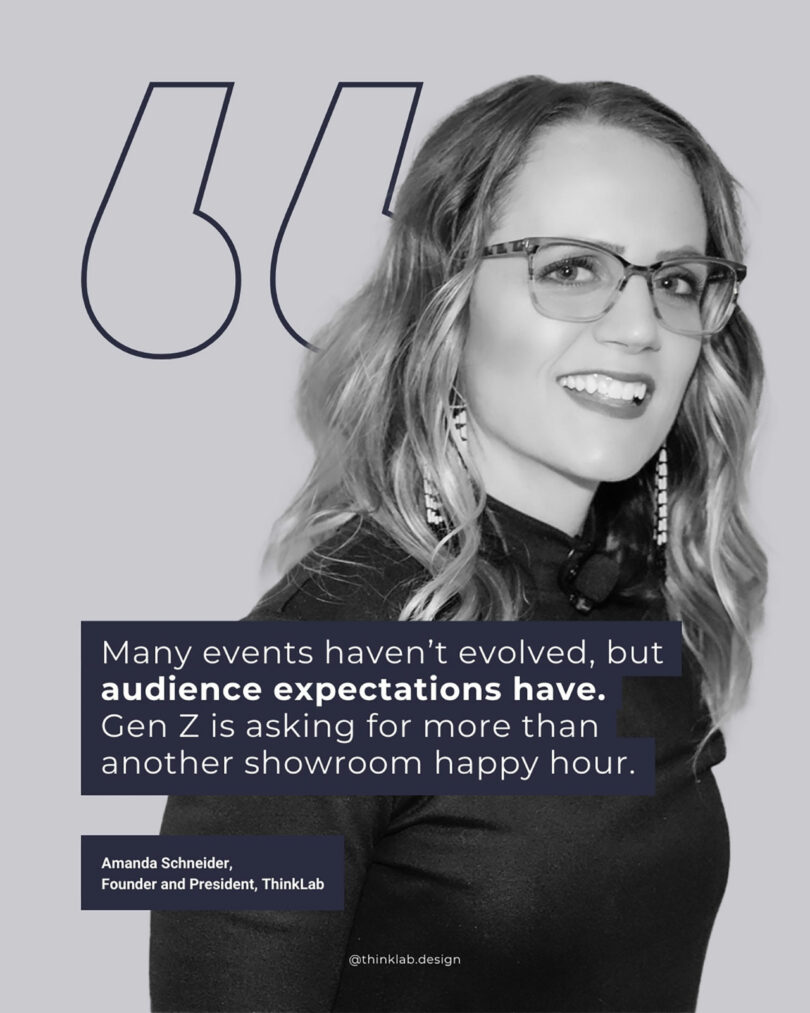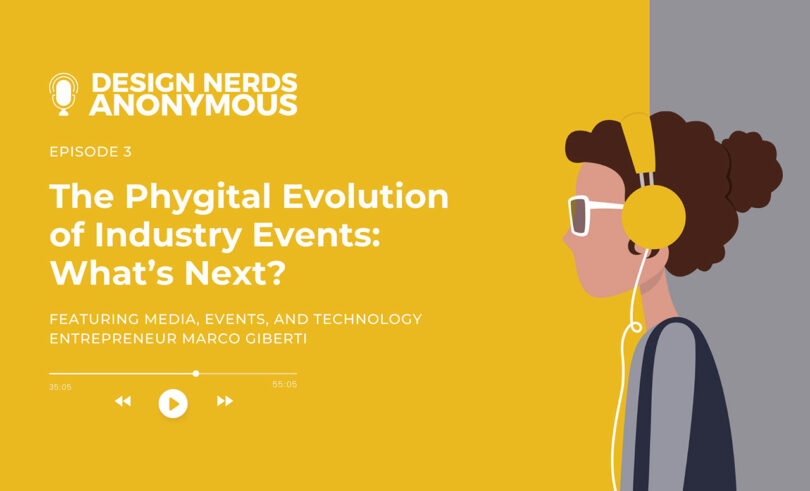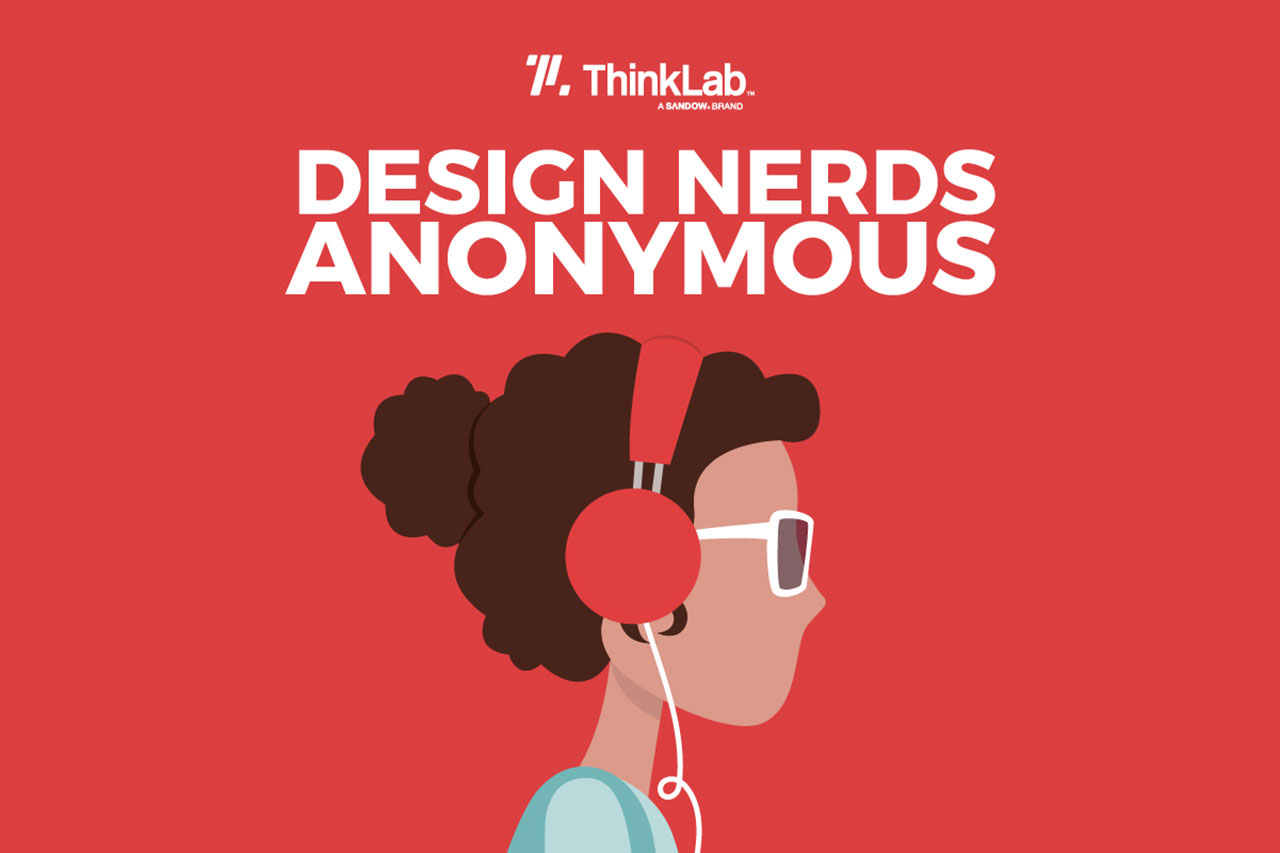In today’s trillion-dollar events industry, fueled by some 20% growth post-COVID, simply bringing people together isn’t enough. Those facilitating our glorious return to in-person occasions know that effective trade shows, conferences, and activations must be reconsidered as meaningful moments part of a larger brand ecosystem – or risk outreach falling flat and feeling contrived.
Marco Giberti, a leading expert in live event innovation, returns to join host Amanda Schneider, ThinkLab founder and president, for a discussion regarding this timely topic on the latest episode of Design Nerds Anonymous – a business-minded podcast for the architecture and design industry, delivering the most insights per minute wherever you get your podcasts.
The duo discusses Giberti’s 2021 predictions, dissects the “phygital” brand experience, and delivers some salient points with a focus on actionable takeaways for organizers, sponsors, and attendees alike. Here are several lines of inquiry the experts explore during this episode:

Why do people gather and what makes an event compelling?
In-person experiences – and the subsequent, unique human interactions that occur as a result – have become invaluable through the advent of AI, integration of applications, and constant use of digital tools. Technology cannot replace organic connection with others whether it be for business or pleasure.
“Face-to-face is not going away. You must prepare your marketing plan to make it as effective as possible,” Giberti says. “That’s where the magic happens. You build trust face-to-face.”
But physical events may be enhanced by technology for an elevated brand experience, which doesn’t have to end with the close of a show. Successful endeavors focus on individual events as parts of a larger narrative rather than isolated moments.
How can I create meaningful event experiences?
With the proliferation of technology, the better events are bolstered by a strategic use of digital enhancements for various purposes: event discovery, audience targeting, real-time engagement tracking, and post-event analytics.
“Expectations have changed, priorities have changed, and the events that will stay relevant are the ones that evolve,” Schneider insists. Regardless of computer literacy, the most adept marketers are figuring out what is beneficial for their brand and investing in the proper amount of technology regardless of industry hype.

How can I hybridize virtual and in-person experiences strategically?
Business owners and marketers, at any operational scale, now have access to a plethora of options that marry in-person events with technological advancements or conveniences. But to do so, one must think strategically about desired outcomes and the added value technology brings to every facet of an event: pre-planning like demographics, prospect interests; the on-site experience, real-time interactions, and location-based engagement; and the post-event follow up, lead tracking, and conversation analysis.
AI technology can assist marketers and publicists in discovering relevant events for clients in need of more focused brand exposure. In congruence, that same technology is boosting organizer visibility by relevant brands. Phone sensors, QR codes, and custom electronic installations facilitate professional networking, real-time traffic analysis, and interactive displays that leave a lasting brand impression. CRM software and other marketing platforms can help brands manage leads and plan timely follow-ups for meaningful, personalized communications.

How can I leverage quantitative feedback?
To the dismay of many, there is no ‘one-size-fits-all’ solution. Rather, data should be treated like soil rich in nutrients, ready to be tilled and cultivated. Brands remain in a constant feedback loop with customers and clients testing new strategies, responding to the current cultural climate, and preparedness for change. Resilience requires adaptability and marketing investments that change over time.
“There’s a new generation of event technology companies helping brands and business enterprises identify events using AI, participate in those events, and measure return on investment of those events,” Giberti adds.
How can I integrate events into a year-long marketing strategy?
Significant lifestyle changes like the pandemic are accelerators for change and the impetus for innovation. From consumer electronics to high-fashion houses to today’s most attuned musicians, the biggest tastemakers have found ways to host exclusive, in-person events while making the experience accessible to their global audience in a way unique to the individual brand.
While those budgets remain mostly aspirational, the core tenet remains actionable: the strongest marketing strategy is one that marries physical ephemera and brand experiences with a portfolio of digital solutions for meaningful communication yearlong.

To hear DNA Season 7, Episode 3 in full, or to subscribe for more, visit here.
Art provided by ThinkLab.

